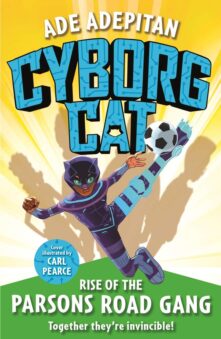Yay!! We’ve made it to episode 5! Thanks for celebrating this milestone with me!
In this episode, we talked about autism and the book: ‘ Can you see Me?’ by Libby Scott and Rebecca Westscott. It’s a chapter book, written for the age group 8-12 years. This gem of a book was a collaborative effort between two great minds. Libby Scott is an 11-year old girl who has autism herself, and Rebecca Westcott is a children’s book author and special education needs coordinator. (Click here to read an interview with the two of them about how the book came to be).

Just like the co-author Libby, our main character Tally is an 11 year old girl with autism. She is also a little sister, a daughter, a friend and a freshly minted 7th grader! Tally is trying to navigate a world that has lots of unwritten rules – rules that don’t quite make sense to her because of her autism.
Tally’s mum gives her a diary to help her understand how she copes with different situations. This is really good for us readers, because we really get the inside scoop on Tally’s autism. (Awesomely, all Tally’s ‘diary entries’ were written by Libby Scott, which brings a very authentic perspective to the character).
WHAT IS AUTISM?
Autism is a lifelong condition that first appears in childhood, and it typically causes challenges with communication, social interaction and behaviour. You may hear this called autism spectrum disorder, because symptoms can look very different from one person to the next. Some people are only mildly affected, while others are very severely affected. It is not yet clear what causes autism, but it is likely a combination of genetic and environmental factors.
Some common features of autism:
- Sensory Processing issues (some can be unusually sensitive to touch, loud noises, food textures, etc.)
- Difficulty with verbal communication (some may not speak at all; others may develop language later than expected. Some may have abnormal speech patterns, like repeating words or sounds over and over)
- Difficulty with nonverbal communication (it may be hard for them to make eye contact, to interpret/correctly use facial expressions and tone of voice; they may express emotions differently)
- Repetitive actions (like flapping their hands, rocking the body from side to side, tapping objects)
- Difficulty with changes in routine
These are just a few examples. Sometimes autism can also be associated with intellectual disability, mental health disorders, and behavioural issues. Though autism is lifelong, there are therapies that may help improve communication, social and life skills. As with many childhood developmental conditions, it is important to get kids diagnosed early so that they can have access to helpful resources.
Behind the Behaviour
In ‘Can You See Me?’, Tally’s behaviour is often misunderstood by people around her, which is hard on her relationships. But as readers, we get to see why she does what she does, how her autism influences her behaviour.
On the surface:
- Tally may seem impatient – but her autism makes it difficult for her to understand figures of speech. So, being told to wait a couple minutes = two minutes exactly!
- Tally may seem spoiled when she insists on having a particular food packed for her lunch – but her autism makes it difficult for her to break routine.
- Tally may seem rude if she moves away when someone touches her – but this is part of her sensory processing issues with her autism.
- Tally may seem uncaring if she doesn’t show her concern outwardly when someone gets hurt – but she processes and shows her emotions differently because of her autism
So, there are many ways in which autistic people can be judged and misunderstood. But, the many insights in this book can help the reader look beyond the surface. Tally also shares several suggestions for how to relate better to people with autism.
Lots to think about and talk about with ‘Can you See Me?’ Oh, and it’s also incredibly funny! I highly recommend the Audible version.
For the young’ns:

The other book I discussed is ‘The Girl who Thought in Pictures – The Story of Dr. Temple Grandin‘ by Julia Finley Mosca. Dr Temple Grandin is an American scientist, who also has autism. She is a prominent speaker and advocate for people with autism. This short picture book (written in rhyme!) is like a mini-biography. Geared towards children ages 5-10, there’s lots to discover about Dr Grandin’s life and how she defied expectations.
Do you know any other good books about autism? Share below!
Interested in other children’s books touching on health conditions? Check out our bookshelf!

